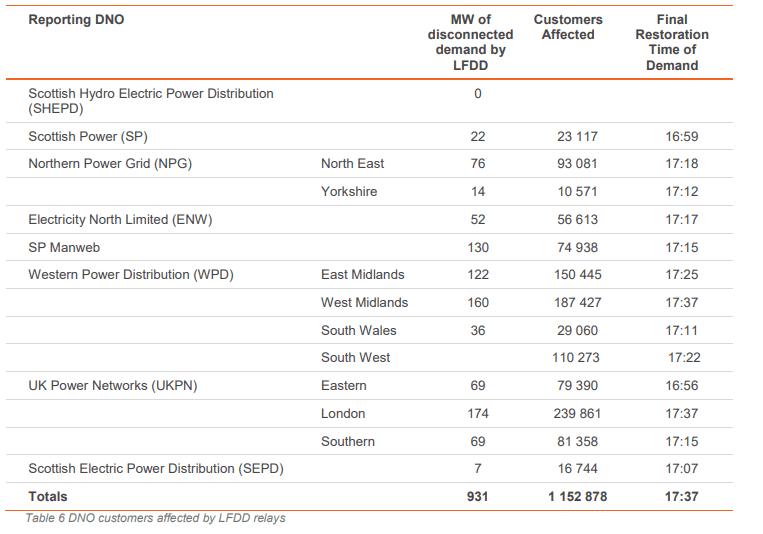This is the Sponsored paywall logged out

National Grid Electricity System Operator (ESO)’s interim report on this month’s power cut has confirmed it was triggered by a lightning strike.
The strike at 4.52pm on Friday 9 August on the Eaton Socon, Wymondley Main transmission circuit caused the loss of 500MW of embedded generation. Immediately following the strike, Hornsea offshore windfarm and Little Barford gas power station almost simultaneously reduced their energy supply to the grid. The report says the two power losses were independent of one another but each “associated with the lightning strike”.
The report describes the event as “extremely rare and unexpected” and stresses that the protection systems on the transmission system operated correctly. It says that while the strike triggered “an exceptional cumulative level of power loss” outside the level required by security standards – sending the frequency plummeting to a low of 48.8HZ – the mechanism of load-shedding to protect the system worked “largely as expected”.
Following the lightning strike, Hornsea immediately de-loaded from 799MW to 62MW. The report says the initial reaction from Hornsea’s systems was as expected but very shortly afterwards, as the reaction expanded throughout the plant, the protective safety systems activated. It says that following an initial review, adjustments to the wind farm configuration, and fine tuning its controls for responding to abnormal events, it is now operating “robustly to such millisecond events”.
Near instantaneous to the deloading at Hornsea, Little Barford Gas Power Station tripped with the immediate loss of 244MW from the steam turbine unit. RWE have confirmed that after approximately one minute the first gas turbine tripped due to excessive steam pressure in the steam bypass system. The second gas turbine was manually tripped by staff in response to high steam pressures around 30 seconds later. RWE has said the cause of the trip was the discrepancy between the three speed signals.
The low frequency demand disconnection (LFDD) was triggered at 4.53pm, with the ESO authorising restoration at 5.06pm, and all power back up by 5.37pm.

The 26-page report, submitted to Ofgem on Friday, insists that the transmission system operated in line with security standards and the Grid Code.
The final report, to be submitted by 6 September, will seek to understand the exact failures at Little Barford and Hornsea and update on work with the distribution network operators (DNOs) to review the impact on demand and priority of disconnections.
It will also review ESO communications, which it said were not as rapid as it would have liked.
The report highlights other work being undertaken by the ESO, including a programme to allow distribution connected generators to adapt their Loss of Mains (LoM) protection settings and a pathfinder project looking at how new sources of inertia and other stabilisers can be introduced to the system. It is also developing new frequency response services and inertia monitoring capability.
Ofgem has now officially launched its investigation, which will decide whether any of the parties involved breached their licence conditions.
The initial focus of the probe will be ESO’s requirements to hold sufficient back-up power to manage the loss of generation supplies – both in terms of inertial and frequency response. It will also focus on how generators met their obligations in responding to the transmission fault and whether DNOs complied with their LFDD obligations.
Jonathan Brearley, Ofgem’s executive director of systems and networks, said: “The power cuts of Friday 9 August caused interruptions to consumers’ energy and significant disruption to commuters. It’s important that the industry takes all possible steps to prevent this happening again.
“Having now received National Grid ESO’s interim report, we believe there are still areas where we need to use our statutory powers to investigate these outages. This will ensure the industry learns the relevant lessons and to clearly establish whether any firm breached their obligations to deliver secure power supplies to consumers.”
The full report can be found here.




Please login or Register to leave a comment.